Did you know that choosing the wrong type of rope fiber can delay your tasks—or worse, pose safety risks in industries like fishing, agriculture, or construction? It may sound simple, but rope fiber comes in more variations than you might think—each type offers different properties, strength, and applications. From lightweight floating PP ropes and flexible PE ropes, to ultra-durable Nylon and naturally aesthetic Manila ropes, understanding the differences helps optimize both your cost and performance.
In this article, SIAM Brothers Vietnam will help you classify today’s most popular types of rope fiber so you can determine which is the most suitable for your specific usage. Don’t rush to pick a rope until you’ve read through this guide!
1. What is Rope Fiber?
Rope fiber refers to a strong, twisted rope formed from multiple strands of smaller fibers braided or twisted together in several layers. This structure enhances durability, elasticity, and tensile strength. Depending on the intended use and working environment, ropes are made from different materials to suit specific needs.
Key Characteristics of Rope Fiber
If you’re comparing rope types or trying to decide which is best, here are some standout features that define rope fiber:
- Multi-layer braided structure: Unlike simple cords or paracord, rope fiber is composed of tightly twisted layers that increase tensile strength and load capacity.
- Variety of materials: Rope fibers can be made from synthetic materials (like PP, PE, or Nylon) or natural fibers (like Manila), each offering unique physical properties.
- Flexible sizing: Rope diameter ranges from as small as 3–5mm to over 50mm, depending on the application.
- Versatile applications: Rope fibers are widely used for pulling loads, mooring boats, bundling cargo, building tents, decorating, making playground equipment, and creating climbing ladders.
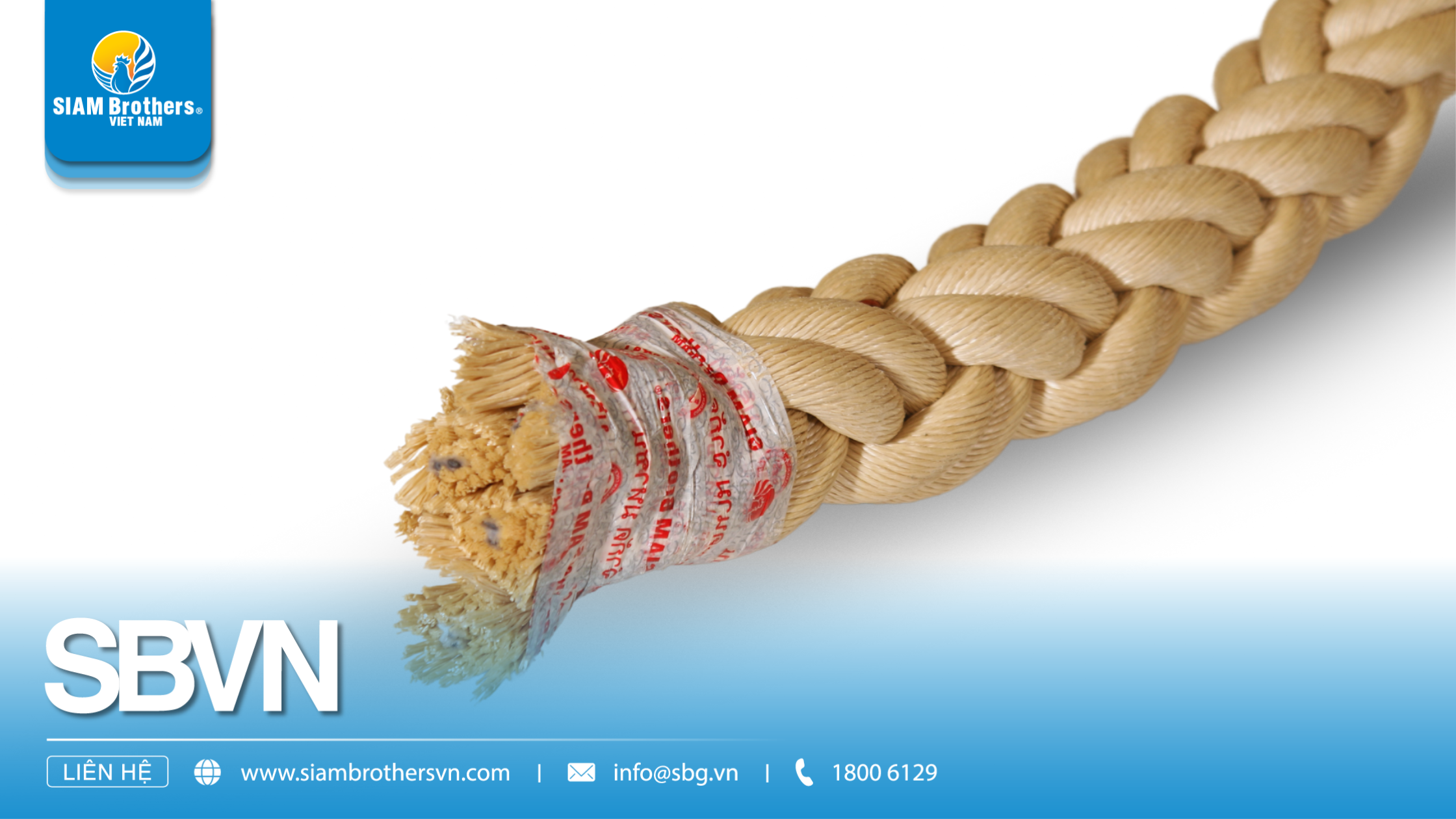
2. Overview of the 4 Most Common Types of Rope Fiber
2.1. Polypropylene (PP) Rope Fiber
- Key features: Lightweight, floats on water, highly chemical-resistant.
- Main applications: Ideal for marine use, boat mooring, and fishing where ropes are often exposed to water.
- Advantages: Low cost, non-absorbent, easy to handle.
Note: Less durable than Nylon in high-load environments.
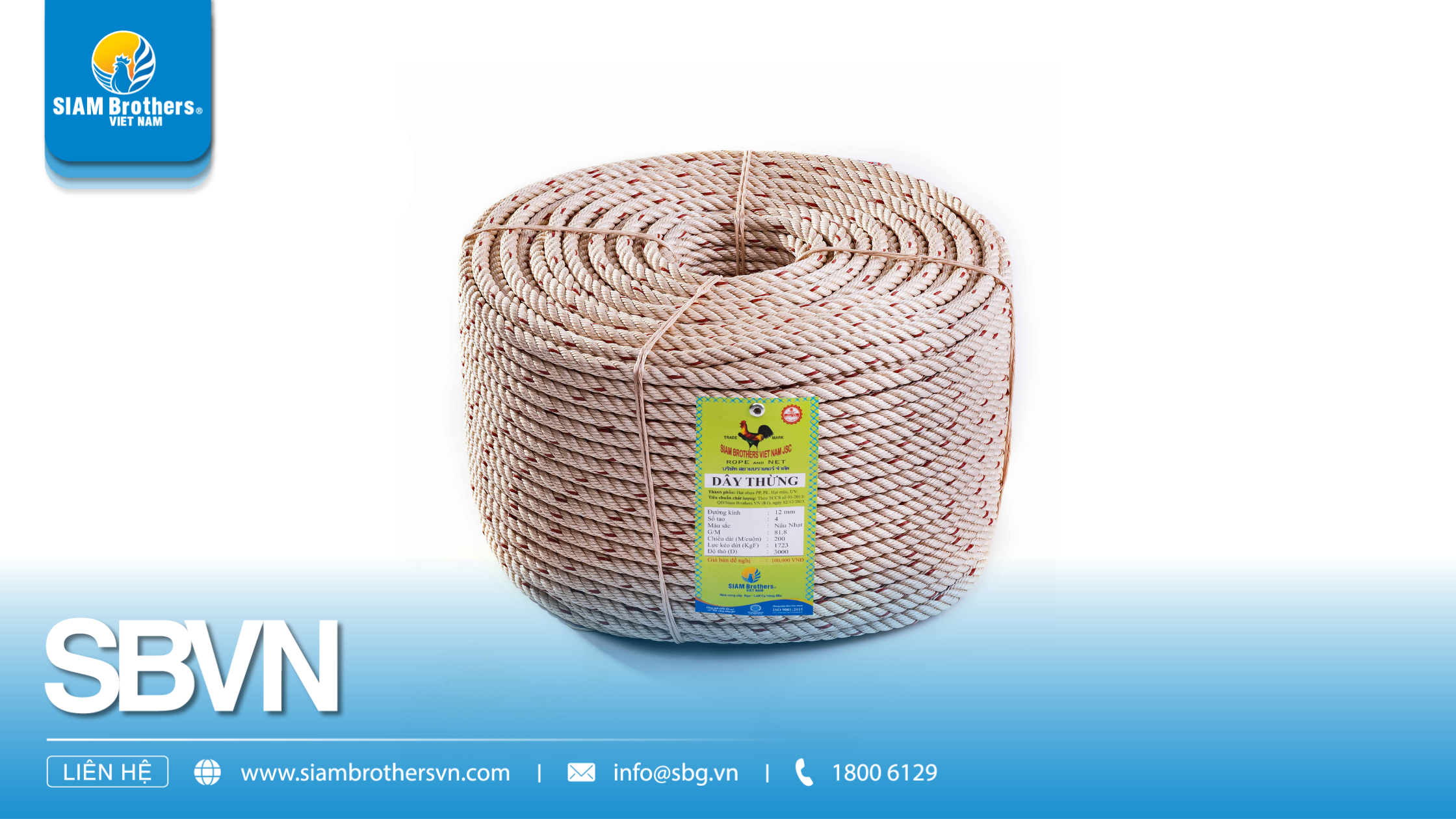
2.2. Polyethylene (PE) Rope Fiber
- Key features: Flexible, abrasion-resistant, UV-resistant.
- Main applications: Popular in agriculture, packaging, bundling, and outdoor activities.
- Advantages: Stable durability, rot-resistant, well-suited to Vietnam’s climate.
Note: Not ideal for tasks requiring high elasticity.
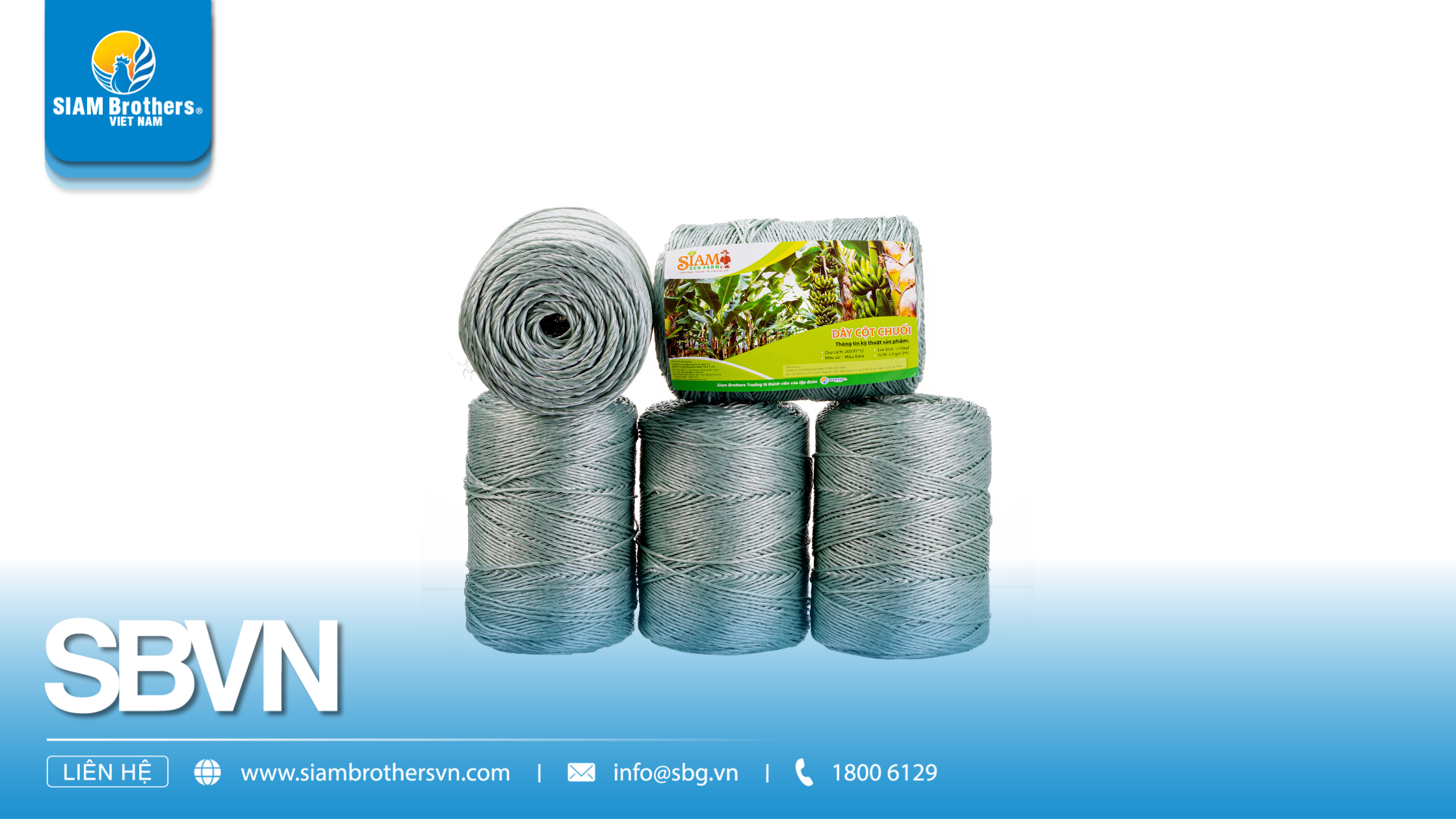
2.3. Nylon (Polyamide) Rope Fiber
- Key features: Extremely strong, high tensile strength, best elasticity among synthetic ropes.
- Main applications: Used in heavy-load operations like lifting, construction, and shipping.
- Advantages: Superior durability, effective in both dry and wet conditions.
Note: Absorbs moisture over time, which can affect weight in damp environments.
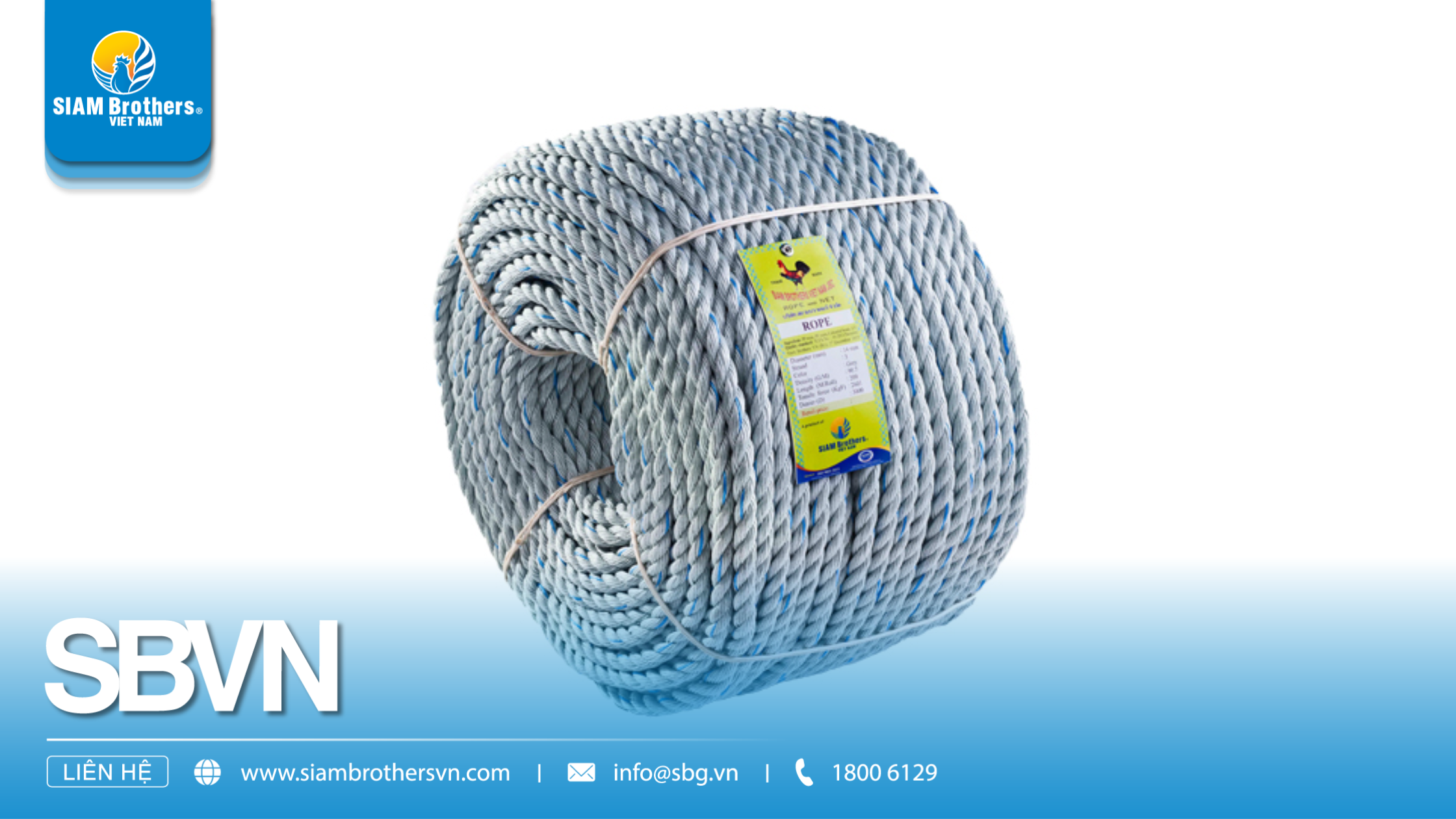
2.4. Manila Rope Fiber (Natural)
- Key features: Made from Abacá plant fibers, eco-friendly, signature light brown color.
- Main applications: Preferred for interior design, playgrounds, handicrafts, or projects requiring aesthetics.
- Advantages: High aesthetic value, excellent knot grip, non-slippery.
Note: Not suitable for prolonged exposure to moisture; can rot if not stored properly.
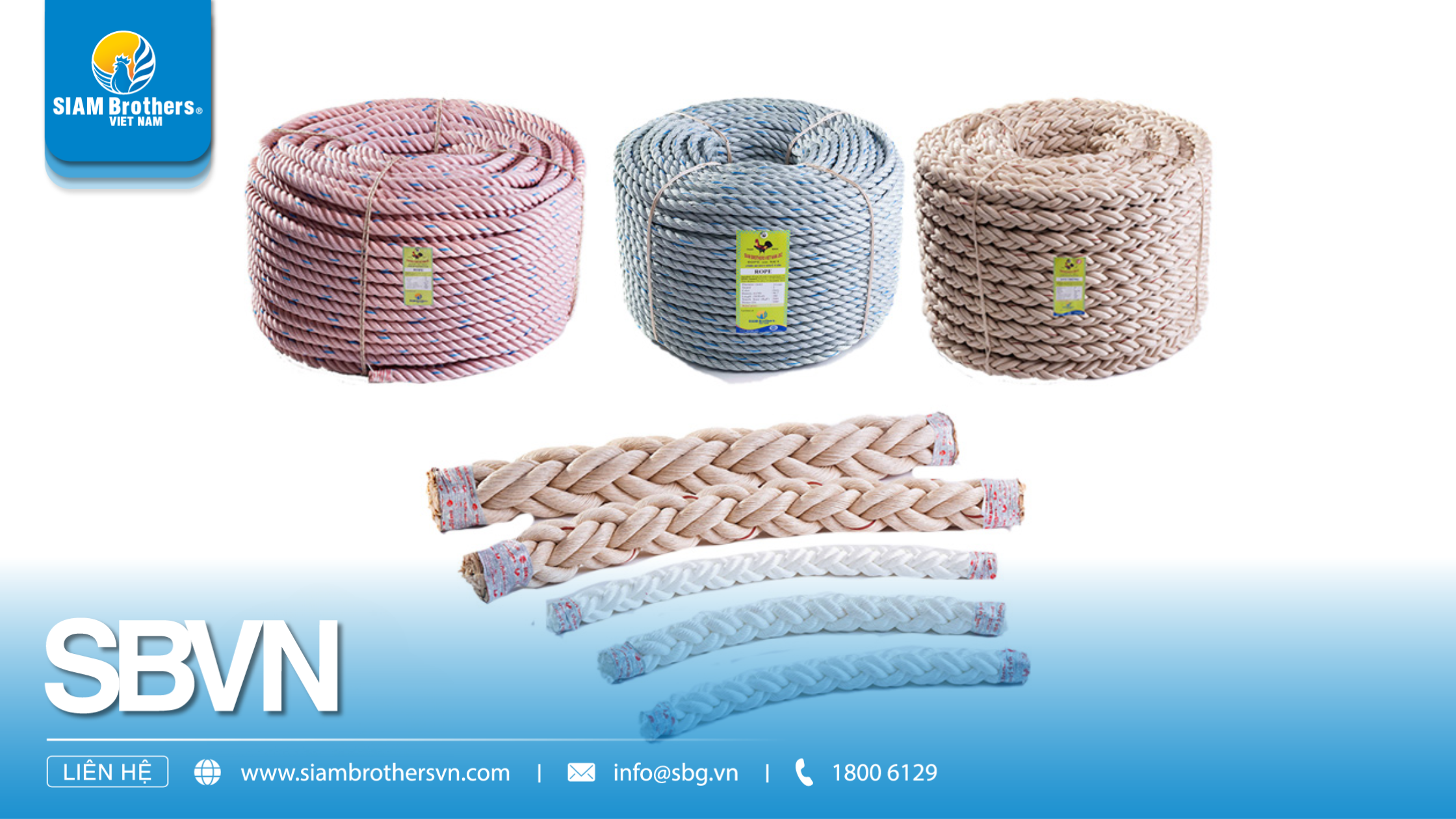
3. Comparative Table: Which Rope Fiber Should You Choose?
Here’s a quick comparison of the four most common types of rope fiber:
| Criteria |
PP Rope |
Fiber PE |
Nylon Rope |
Fiber Manila |
| Material |
Polypropylene (synthetic) |
Polyethylene (synthetic) |
Nylon / Polyamide (synthetic) |
Abacá (natural) |
| Tensile |
Strength Moderate |
Fairly Good |
Very High |
Moderate |
| Water Resistance |
Excellent – Floats on water |
Non-absorbent |
Slight moisture absorption |
Poor long-term water resistance |
| Elasticity |
Low |
Medium |
High – Great elasticity |
Low |
| Outdoor Durability |
Good |
Excellent – UV resistant |
Good |
Poor without proper storage |
| Aesthetic Appeal |
Low |
Medium |
Medium |
High – Rustic and naturally beautiful |
| Typical Applications |
Fishing, boat mooring |
Agriculture, packaging, general use |
Heavy-duty construction, shipping, industrial |
Interior design, playgrounds, handicrafts |
| Cost |
Low |
Moderate |
High |
High |
Expert Tips from SIAM Brothers Vietnam
- Need a rope that floats on water? → Choose PP rope fiber.
- Looking for weather and UV resistance for outdoor use? → PE rope fiber is your best bet.
- Working with heavy loads that require elasticity? → Nylon rope fiber is unmatched.
- Prioritizing visual appeal or need rope for decoration/playground use? → Manila rope fiber adds the perfect touch.
5. FAQ – Frequently Asked Questions about Rope Fiber
5.1. How do I determine the diameter and load capacity of rope fiber?
Rope diameter is typically measured in millimeters (mm) or inches. Load capacity depends on the material, braiding structure (twisted or core-braided), and diameter. Manufacturers usually provide this data in a technical specifications sheet. For specialized applications like lifting or suspending objects, always choose rope fiber with verified load ratings.
5.2. Can rope fiber be cut and rejoined?
Yes, but it must be done correctly:
- For synthetic ropes such as PP, PE, or Nylon, seal the ends with heat after cutting to prevent fraying.
- For rejoining, use specialized knots, thermal fusion, or professional splicing techniques based on your intended application.
5.3. Does rope fiber rot, mold, or degrade over time?
It depends on the material:
- Natural fibers like Manila can mold or rot if improperly stored.
- Synthetic fibers (PP, PE, Nylon) are more rot-resistant but may still degrade due to prolonged UV or chemical exposure.
- Always store rope fiber properly to extend its lifespan.
5.4. Which rope types are safe for children or interior design?
Manila and Cotton rope fibers (if available) are popular choices for home décor, children’s play areas, and handmade items thanks to their soft texture, natural look, and high safety. However, ensure the ropes are clean and free of harmful chemicals before using them around children.
5.5. Can rope fiber be reused or recycled?
Yes, especially synthetic ropes like PP and PE, which can be reused multiple times if not damaged.
Selecting the right rope fiber doesn’t just save you money—it ensures maximum safety, durability, and efficiency for your specific tasks. From lightweight, floating PP, flexible PE, high-strength Nylon, to eco-friendly and decorative Manila, each type of rope fiber offers unique advantages tailored to different industries and environments.
Still wondering which rope fiber best suits your needs? Let SIAM Brothers Vietnam—a leading expert in rope fiber manufacturing and distribution—help you make the right choice. We offer professional consultation and tailored rope solutions for various sectors: marine, agriculture, industrial, and domestic use.
Contact us today for a free consultation or visit our website at siambrothersvn.com to explore detailed product lines and technical specifications.
Source: SIAM Brothers Vietnam
Contact us:
Address: 5th floor, VRG Building, 177 Hai Ba Trung Street., Vo Thi Sau Ward, District. 12, Ho Chi Minh City, Vietnam
Tel: (+84) 28 38 912 889
Hotline: 1800 6129
Facebook: www.facebook.com/siambrothersvn
Email: info@sbg.vn
YouTube: youtube.com/@siambrothersvietnam1728
X: x.com/sbvnjsc
OA Zalo: zalo.me/1402339229697925373
App SBVN ID:







